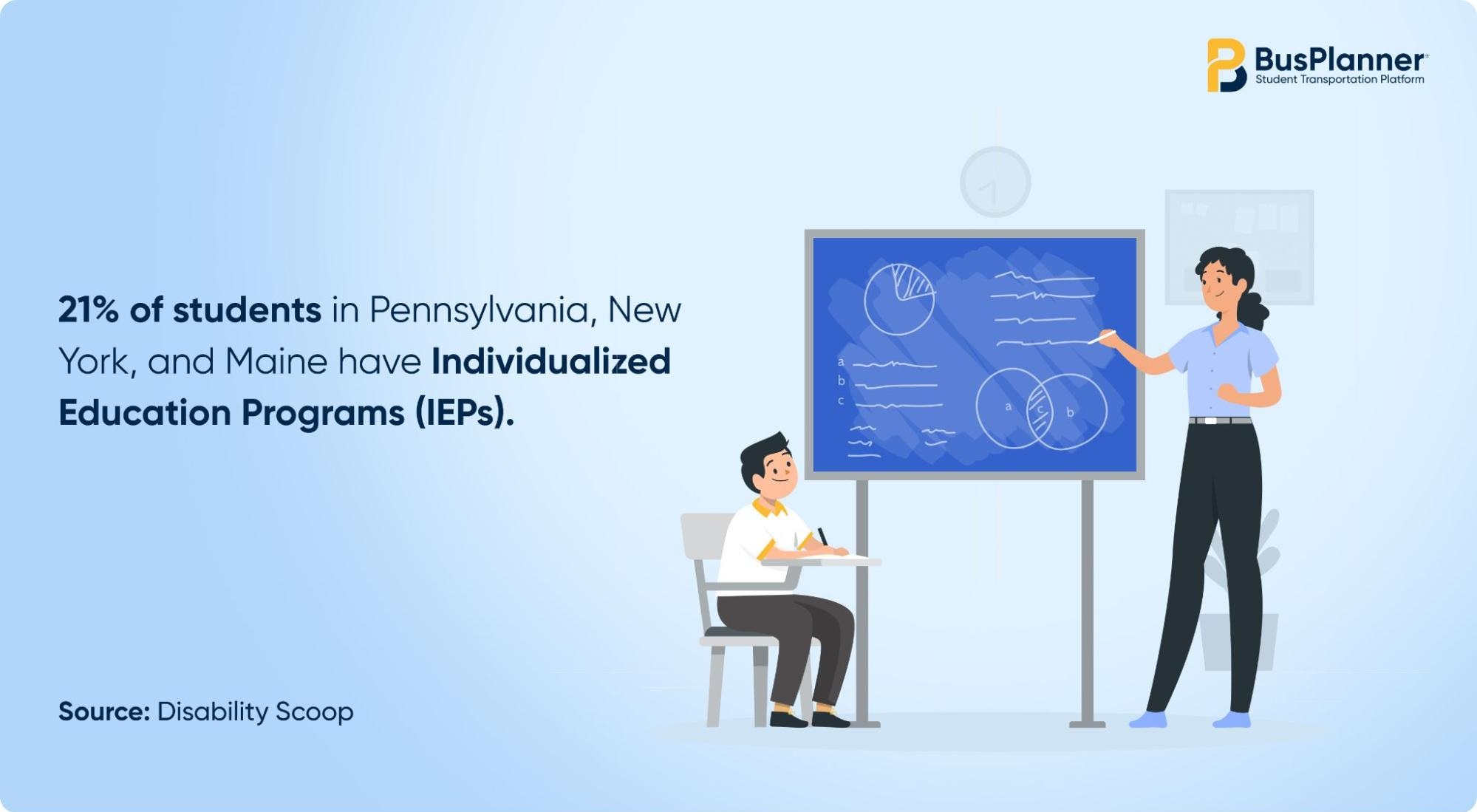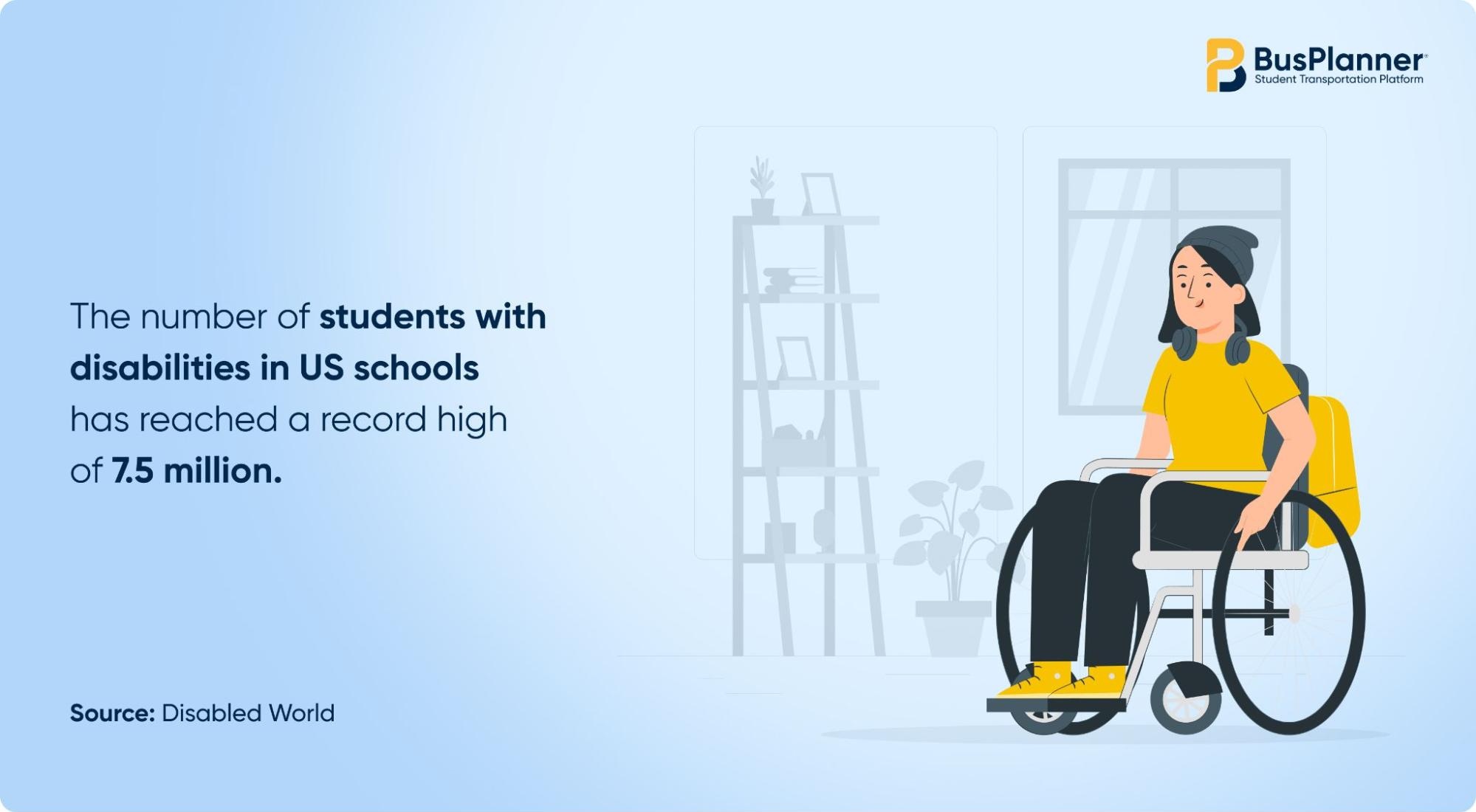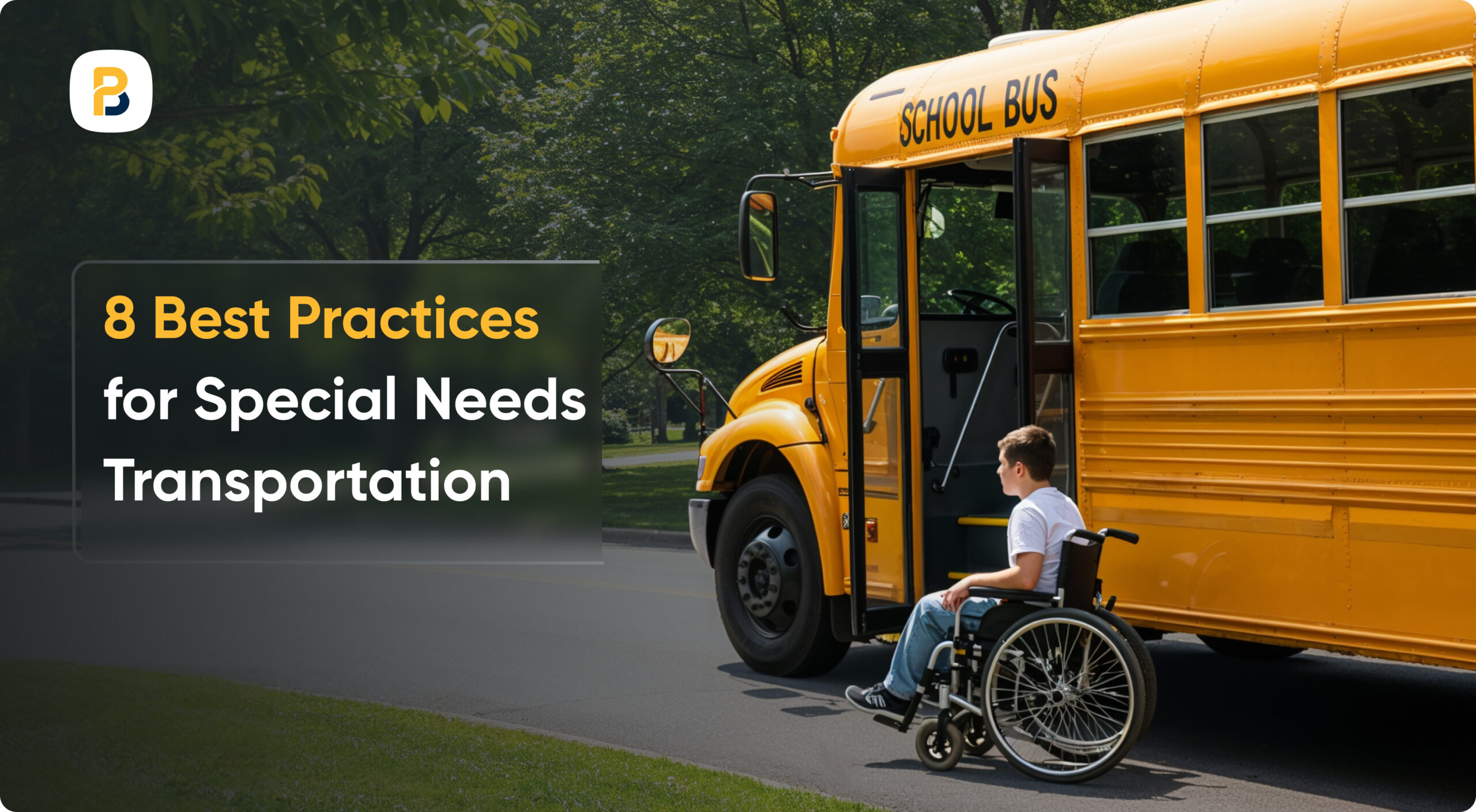Safe and reliable transportation is essential for every student. Yet 74% of individuals with disabilities report facing challenges with transportation, emphasizing the importance of thoughtful planning, accurate routing, and clear communication to make every student journey stress-free, dependable, and inclusive.
This article outlines best practices for providing efficient transportation for children with special needs.
1. IEP-Aware Student Profiles for Safer Transportation
An Individualized Education Program (IEP) is a legally mandated document for differently-abled children that defines each student’s learning and support needs. A student transportation platform that integrates IEP-aware profiles helps ensure accurate daily transit decisions.
- Personalized Planning: Ensure comfort and appropriate support during travel by using each student’s IEP profile to design routes that match their individual needs.
- Reduced Errors: Foster student well-being by preventing routing or seating mistakes with intelligent automation that verifies every decision.
- Improved Confidence: Parents and staff trust that every student receives the right level of care and support.

2. Centralized Student Records for Efficient Planning
Managing transportation for special needs students requires careful coordination and attention to detail. Effective student transportation software streamlines this by bringing relevant data together, helping districts create optimized routes.
- Organized Information: Essential details like mobility, medical alerts, and pickup restrictions are stored in one place.
- Smarter Routing: The system seamlessly follows door-to-door or curb-to-curb requirements for each child.
- Equipment Matching: To save time and reduce errors, lifts, harnesses, or special equipment are assigned automatically to students.
3. Constraint-Based Routing for Individualized Plan
Each student with disabilities has a unique schedule and needs, requiring careful planning. Ensure safe and personalized transportation with a constraint-based routing system that helps transport professionals create routes tailored to each child’s requirements.
- Optimized Travel Time: For a shorter and more comfortable ride, students spend less time on the bus.
- Behavioral Safety: In order to encourage calm and positive behavior during trips, all children are grouped thoughtfully.
- Compliance Assurance: All routes follow IEP rules and school district policies to meet legal and safety standards.

4. Planned vs Actual Monitoring With Live GPS
Accuracy and timing are crucial in special needs transportation. Efficient school bus GPS software lets dispatchers monitor every route in real-time. They instantly identify off-route events or delays, ensuring students reach school or therapy sessions safely and on time.
5. Driver and Aide Information at Fingertips
Support staff and drivers play a vital role in student safety. To help them, school districts should provide easy-to-use mobile apps and trip sheets with essential details about each student, including calm-down techniques, seating and boarding guidelines, and other safety notes.
6. Parent Communication and Visibility
All parents want assurance that their child’s journey is safe and predictable. The optimized parent portal provides real-time updates, offering peace of mind and reducing communication gaps.
- Transparent Insights: Parents receive instant route changes and timing notifications.
- Reduced Call Volume: The number of phone calls, queries, and confusion decreases due to clear communication.
- Greater Trust: Continuous visibility strengthens the relationship between parents and the district.
7. Scenario Planning for Changing Needs
Special needs programs evolve throughout the year with new sessions and student placements. Streamlined school bus management software allows routes to adjust instantly without disrupting operations. From short-term programs like Extended School Year (ESY) to out-of-district placements, routes update seamlessly to meet changing student needs while maintaining reliable transportation.
8. Documentation and Audit Trail for Transparency
The student transportation information portal automatically records notes, incidents, and key updates with timestamps, creating a centralized log that strengthens coordination between teams. It simplifies compliance, enhances accountability, and ensures operational transparency.
Key Takeaway: Simplify Special Needs Transportation With BusPlanner
Transporting special needs students demands precision, care, and trust. BusPlanner delivers all these with accurate routing, real-time tracking, and effortless parent communication, ensuring every trip runs safely and smoothly.
Book a demo today to learn more about our comprehensive student transportation platform.







